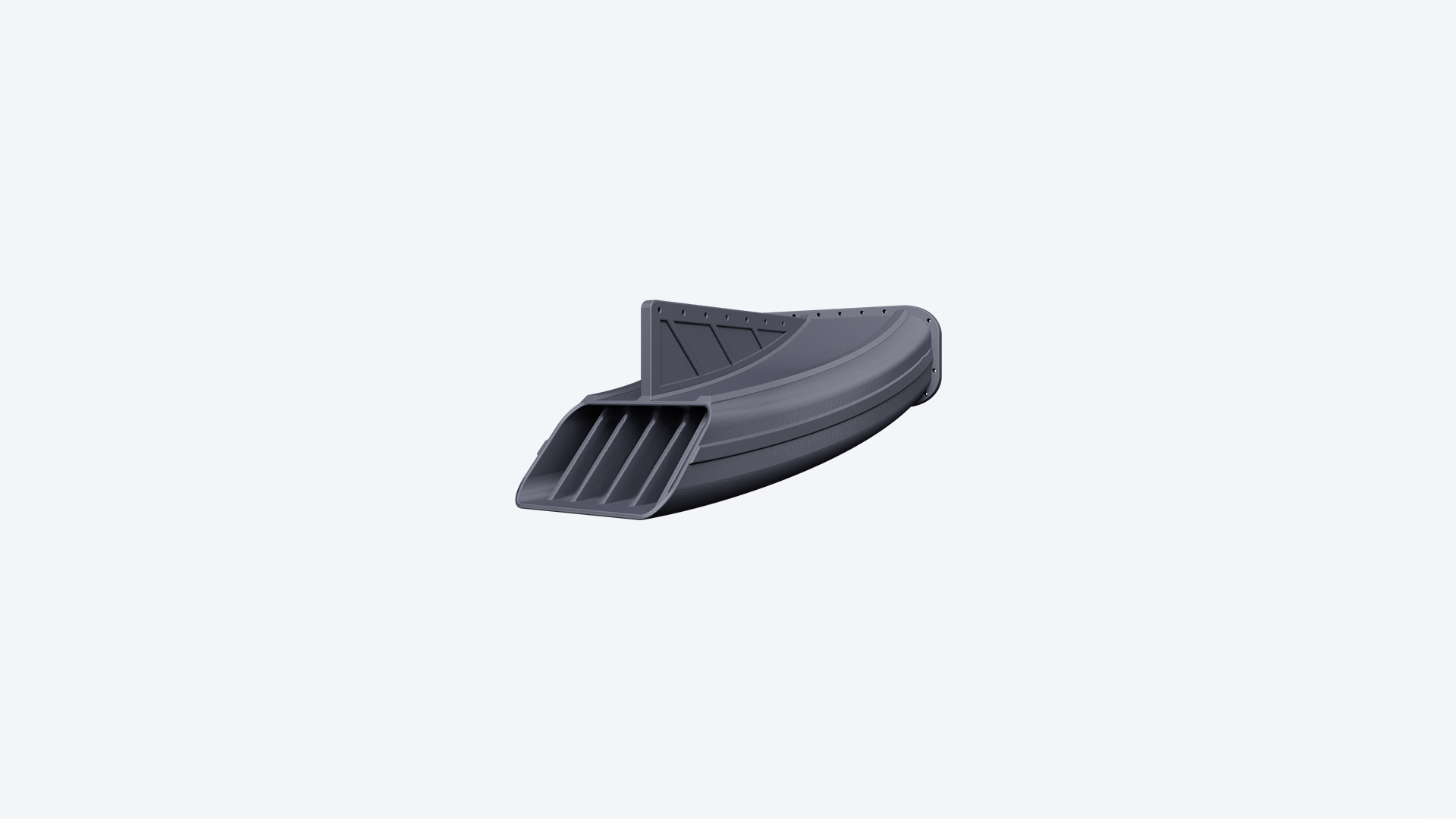
The design and manufacturing of helicopter intake ducts play an important role in the aviation industry, directly influencing the performance, efficiency and safety of flight operations. The combination of the Roboze ARGO 500 3D printer and Carbon PEEK material offers a new way to produce these components, overcoming the limitations of traditional manual fiberglass lamination and offering significant advantages in terms of production efficiency, cost reduction and design freedom.
Manual lamination of fiberglass, although an established practice, has significant limitations. The complexity of the shapes required and the need for high-performance materials often impose limitations on production using conventional methods. This process can generate production delays, high costs and compromises on component quality, negatively impacting operational reliability, competitiveness and overall cost management.
A customer working in the production of light aircraft personally experienced the benefits of the Roboze ARGO 500 3D printer and Carbon PEEK material. The adoption of this solution represented a significant turning point for the company. In addition to overcoming previous limitations, the customer managed to achieve significant improvements in terms of production efficiency, cost reduction and design freedom. All this, to the benefit of end customers who today are more satisfied than ever, confirming the distinctive value that advanced 3D printing can bring to the aeronautical industry.
Learn more about how the Roboze ARGO 500 3D printer and Carbon PEEK material can transform the production of critical aviation components.
